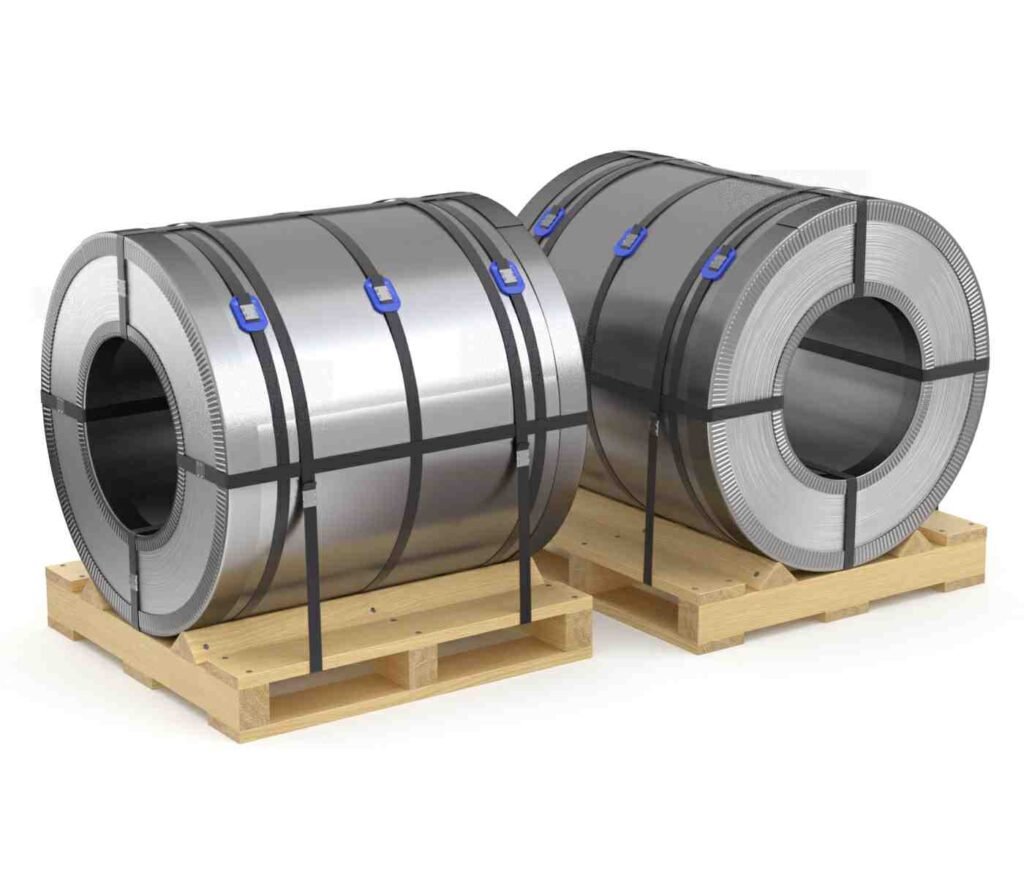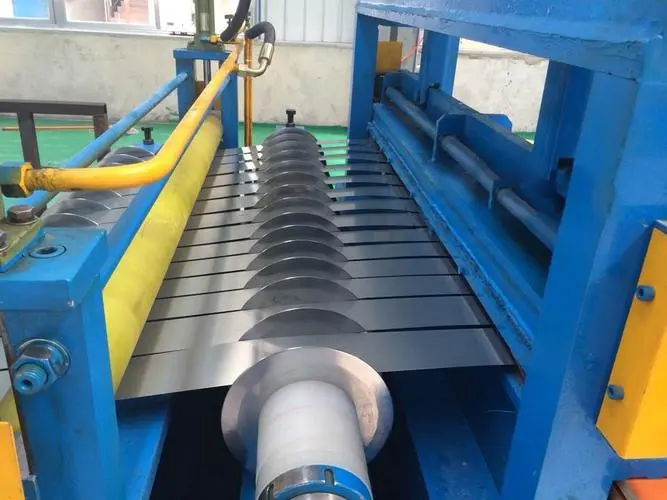
1. Service life of steel plate slitter blades
The service life of steel plate slitter blades generally depends on several factors, including the blade material (different materials such as high-speed steel or alloy steel have different service lives), the hardness and thickness of the material to be cut (harder and thicker materials will wear out the blades faster), the cutting speed (the number of steel plates to be cut per hour), the frequency of cuts, and the maintenance of the knives.
In general, high-quality blades can last 500-1000 hours if properly used and maintained!
2. How to determine whether the slitter blade needs to be replaced and how to replace it?
Slitter blades need to be replaced when the following conditions occur:
1) Cutting quality: If the cutting quality drops significantly, and there are problems such as burrs, cracks, or uneven cuts, the blades may have been badly worn and need to be replaced;
2) Cutting efficiency: If the cutting speed slows down significantly and requires frequent stops to trim the blade, the blade may have lost its good cutting performance and needs to be replaced;
3) Blade wear: If the cutting edge of the blade is worn or dull, and it is impossible to restore its cutting performance by trimming, it needs to be replaced.
Replacement steps (if the slitter has blade replacement instructions, please follow):
1) Stop the machine: First of all, you need to stop the machine to make sure that the drive belt completely stops running, and make sure that the cutter is in a safe condition.
2) Remove the old blade: Use the appropriate tools to remove the old blade from the cutter.
3) Clean the cutter: Clean the cutter’s blade holder and blade mounting locations to ensure there are no contaminants.
4)Install new blade: Install the new blade onto the cutter and make sure the blade is securely mounted.
5) Adjust the blade: Adjust the angle and position of the blade as needed to ensure a quality cut.
6) Test cut: Perform a cutting test to ensure that the new blade is working properly.
7) Resume operation: Confirm that the cutting machine is safe and resume operation.
3. What factors need to be considered when choosing a steel plate slitter blade selection, the general choice of materials, respectively, used in the cutting of which materials of steel plate?
When choosing the material of steel plate slitter blade, you need to consider the following factors:
1) Material hardness: the blade material needs to have enough hardness to ensure that the cutting is not easy to deformation or wear.
2) Wear resistance: The blade material needs to have good wear resistance to extend the life of the blade.
3) Toughness: the blade material needs to have a certain degree of toughness to avoid fracture or breakage during the cutting process.
4) corrosion resistance: if the cutting material is corrosive, the blade material needs to have a certain corrosion resistance to ensure the stability and life of the blade.
The general selection of materials includes:
1) High-speed steel blade: suitable for cutting the general hardness of steel plates, such as aluminum, copper, and ordinary carbon steel.
2) Carbide blades: suitable for cutting high hardness and wear-resistant steel plates, such as stainless steel, or galvanized plate.
3) Ceramic blade: suitable for cutting super hard steel plate, such as silicon steel plate.
4. Whether the slitter blade can be resharpened, what are the steps of resharpening, and what are the points of attention in the process of resharpening?
Slitter blades can be sharpened in general, but the number of times of sharpening is limited, generally only 1~2 times, sharpening usually includes the following steps:
Cleaning the blade, grinding the cutting edge of the blade, adjusting the angle and flatness of the blade, etc.
In the process of resharpening, you need to pay attention to the following points:
1) Using appropriate grinding tools and grinding fluid to ensure the effect of resharpening and the quality of the blade.
2) Control the strength and time of resharpening to avoid excessive resharpening leading to blade thinning or shape change.
3) Keep the flatness and angle of resharpening consistent to ensure the cutting performance and stability of the blade.
5. What is the price of a slitter blade?
The price of slitter blades varies according to the material, hardness, thickness, and other factors of the blades, usually ranging from tens to hundreds of dollars. We recommend that you consult our sales engineers for accurate quotation information when purchasing!
Nanjing Metal Industrial CO., Limited is a manufacturer of mechanical blades from China, producing blades and accessories for industries including metalworking, converting, food, and more. We have more than 15 years of experience in the manufacture and sales of industrial machine blades, machine parts, and regrinding services. We invite you to experience the superior quality of production.






